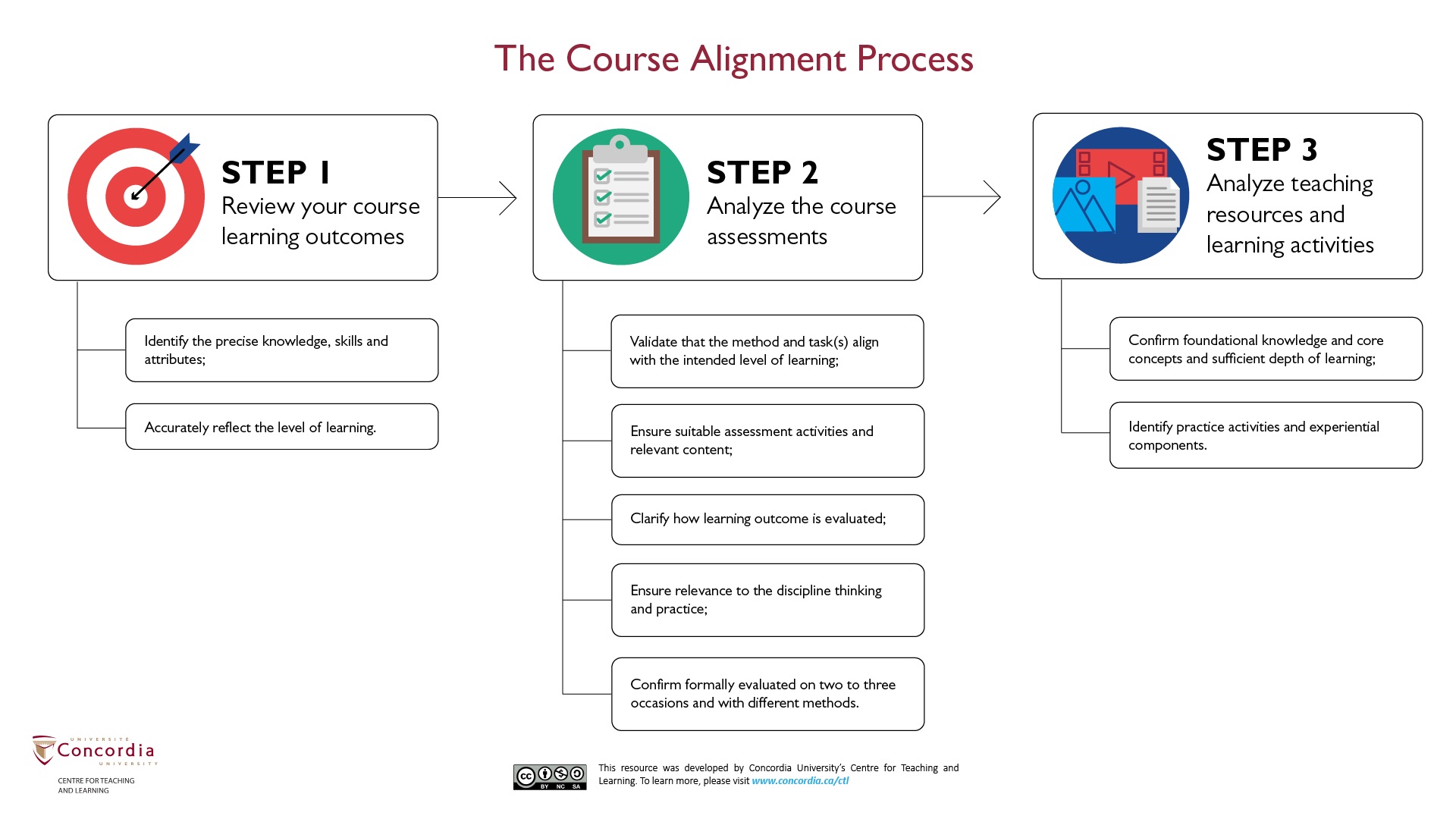Summary
Advantages of course alignment exercise
Evaluate the quality
Conducting a course alignment exercise will help you evaluate the quality of your course design and the learning experience for your students.
Validate course design
Validating that a course is well-aligned can help uncover gaps or problem spots that may impact teaching excellence and hinder student learning.
Optimize course design
The overarching goal with an alignment exercise is to optimize the teaching, learning and evaluation activities in a course.
Five principles for effective course design
Meyers and Nulty (2009) identify five design principles that are key to effective course design in higher education. They require teaching and learning materials and experiences that:
- are authentic and relevant;
- are constructive, sequential, and scaffolded;
- require students to engage in higher-order thinking;
- are aligned with each other and the course outcomes; and
- are challenging, interesting, and provide motivation to learn.
Process of course alignment
A course alignment exercise follows a sequential process:


